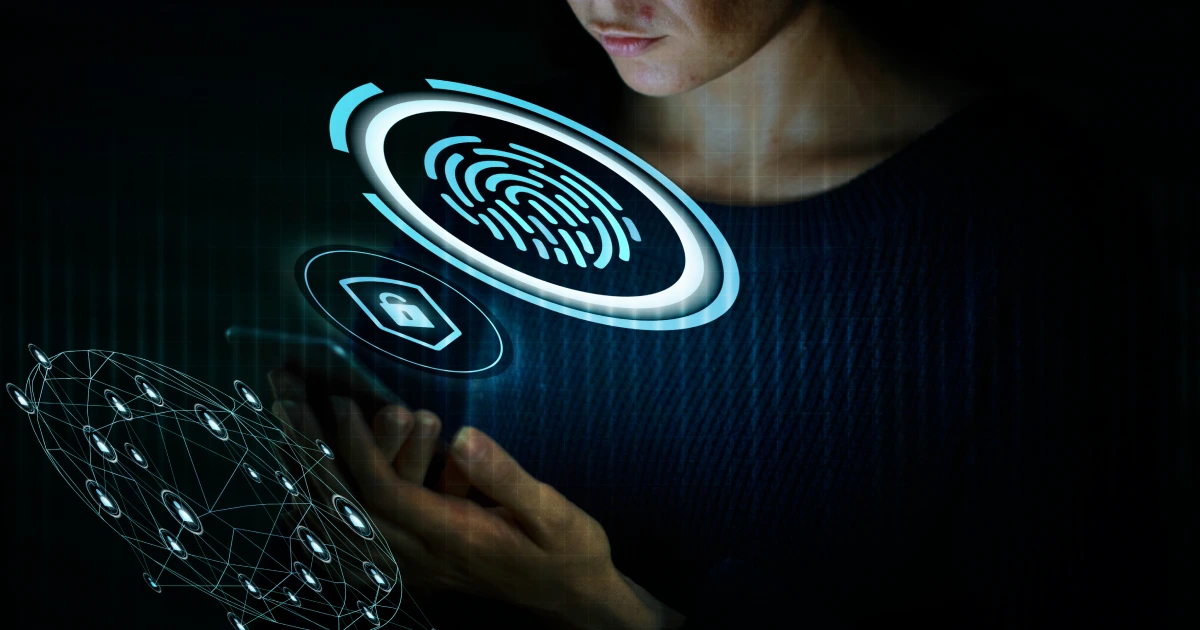Nowadays, ensuring that individuals are who they claim to be is very important for businesses as well as the government. Digital identity verification has become a fundamental yet crucial process for companies across industries, particularly in sectors like finance, healthcare, and e-commerce.
According to a 2024 Identity Fraud Study by Javelin Strategy & Research, traditional identity fraud cost Americans $23 billion in 2023 alone. As more interactions move online, the need for secure and reliable digital identity verification becomes even more important to prevent fraud and ensure compliance with regulatory standards.
Digital identity verification is the process of confirming/verifying the identity of an individual using digital means. This can involve verifying government-issued IDs, biometric data such as facial recognition or fingerprints, and decentralized identity or verifiable credentials issued by organizations. The process helps businesses ensure that they are interacting with legitimate customers and not fraudsters.
What Is Digital Identity Verification?
Digital identity verification refers to the process of validating an individual’s identity online using various digital tools and technologies. It involves confirming that a person is who they claim to be when accessing services or conducting transactions online. This process is critical for businesses that need to prevent fraud, comply with regulations such as Know Your Customer (KYC) and Anti-Money Laundering (AML) laws, and protect sensitive information.
The key difference between identity verification and authentication is that verification occurs at the initial stage of onboarding or account creation. It ensures that the individual is real and matches their provided credentials. Authentication, on the other hand, is a continuous process used to confirm that a verified user is still the one accessing an account.
How Does Digital Identity Verification Work?
Digital identity verification involves several steps, including:
1. Document Verification
The most common method involves verifying government-issued IDs like passports or driver’s licenses. Users upload a photo of their ID document, which is then analyzed using artificial intelligence (AI) to detect any signs of tampering.
2. Biometric Verification
This method uses biometric data such as fingerprints or facial recognition to match a person’s physical traits with their provided ID document. Liveness detection technology ensures that the biometric data comes from a real person rather than a spoofed image.
3. Database Checks
Information provided by the user (such as name, address, or date of birth) is cross-checked against trusted databases like credit bureaus or government records to verify authenticity.
4. Behavioral Analytics
Advanced systems can analyze user behaviour during the verification process—such as typing speed or navigation patterns—to detect anomalies that may indicate fraudulent activity.
5. Device & IP Checks
The user’s device and IP address are analyzed to detect potential risks like mismatched geolocations or suspicious proxies.
6. One-Time Passcodes (OTP)
Some systems send an OTP via SMS or email to verify that the individual has access to a registered phone number or email address.
7. Verifiable Credentials (VCs)
Verifiable credentials are digital representations of any information or details that can be issued by organizations or governments using cryptographic signatures. They cannot be forged or tampered with and can be easily verified. EveryCRED offers verifiable credentials solutions for digital identity verification.
8. Knowledge-Based Authentication (KBA)
KBA generates “out-of-wallet” questions based on personal information from credit files or other databases. These questions are designed to be difficult for fraudsters to answer but easy for legitimate users.
These methods often work in combination to create a multi-layered security approach that ensures high accuracy in verifying identities.
Read: Verifiable Credentials in Healthcare: Empowering Patients and Easier Healthcare Access
Use Cases for Digital Identity Verification
Digital identity verification has broad applications across various industries:
1. Financial Services
Banks and financial institutions rely heavily on digital identity verification to comply with KYC and AML regulations. For example, when opening a new bank account online, customers are required to verify their identity by submitting government-issued IDs and undergoing biometric checks. This helps prevent fraudsters from opening accounts using stolen identities.
2. E-Commerce
E-commerce platforms use digital identity verification to protect against fraudulent transactions. By verifying users’ identities at checkout or account creation, these platforms can reduce chargebacks and build trust with customers. For instance, implementing biometric verification during high-value purchases can ensure that only authorized users complete transactions.
3. Healthcare
In healthcare, patient onboarding requires stringent identity checks to protect sensitive medical information. Digital identity verification helps ensure that only authorized individuals can access patient records or schedule appointments online.
4. Online Gaming & Age-Restricted Services
For industries like online gaming or alcohol sales, verifying users’ ages is crucial for legal compliance. Digital identity verification ensures that only individuals who meet age requirements can access these services. For instance, Spain uses W3C verifiable credentials for online age verification to restrict explicit content exposure to kids.
5. Remote Work & Workforce Management
As remote work becomes more prevalent, companies need reliable ways to onboard employees without in-person meetings. Digital identity verification allows HR departments to verify new hires’ identities remotely while ensuring compliance with employment laws.
6. Travel & Hospitality
Airlines and hotels use digital identity verification for remote check-ins and boarding processes. For instance, biometric checks are increasingly used at airport security gates.
Benefits of Digital Identity Verification
Digital identity verification is beneficial for various businesses across multiple industries, governments, and individuals as well.
- Fraud Prevention: By verifying identities digitally, businesses can significantly reduce the risk of identity theft, account takeovers, and other forms of fraud. According to the 2023 ITRC data breach report, 3,205 total compromises affected over 35 million individuals’ data, which highlights the need for robust security measures.
- Improved User Experience: Automated digital verification processes are faster and less intrusive than manual methods like in-person document checks. This leads to higher customer satisfaction and lower abandonment rates during onboarding.
- Compliance with Regulations: Many industries are subject to strict regulations such as KYC and AML laws that require businesses to verify customer identities before providing services. Digital identity verification helps companies meet these regulatory requirements efficiently.
- Cost Efficiency: Automating the verification process reduces the need for manual labor and minimizes errors associated with manual data entry, leading to cost savings over time.
- Scalability: Digital identity verification systems can handle large volumes of transactions quickly, making them suitable for businesses looking to scale their operations globally without compromising security.
- Security: Multi-factor authentication methods—such as combining biometric checks with OTPs—provide an additional layer of security beyond traditional password-based systems.
- Trust with Customers: Businesses that prioritize secure identity verification processes can build trust with their customers by demonstrating their commitment to protecting sensitive information.
Also Check: Supply Chain Management: How It Works & the Role of Verifiable Credentials (VCs)
Standards in Digital Identity Verification
Several global standards guide how digital identity verification should be conducted, and a study also mentions these:
ISO/IEC 24760
This standard provides a framework for managing identities securely across different platforms while ensuring privacy protection.
NIST Digital Identity Guidelines (SP 800-63)
Issued by the National Institute of Standards and Technology (NIST), these guidelines outline best practices for establishing different levels of assurance in digital identities based on risk factors.
eIDAS Regulation (EU)
The European Union’s eIDAS regulation governs electronic identification services within member states, ensuring cross-border interoperability for digital identities across Europe.
AML5 Directive (EU)
The Anti-Money Laundering Directive requires financial institutions within Europe to implement stringent customer due diligence processes when verifying identities remotely.
These standards help organizations implement best practices in digital identity management while ensuring compliance with regional regulations.
Regulatory Implications
The regulatory landscape surrounding digital identity verification varies by region but generally focuses on preventing financial crime and protecting consumer data:
- Know Your Customer (KYC) Regulations: KYC laws require financial institutions worldwide to verify customer identities before providing services like account opening or lending. Failure to comply can result in hefty fines or legal penalties.
- Anti-Money Laundering (AML) Laws: AML regulations mandate businesses—especially those in finance—to implement robust identity verification procedures aimed at preventing money laundering activities.
- General Data Protection Regulation (GDPR): In Europe, GDPR governs how personal data should be collected, stored, and processed during the identity verification process. Companies must ensure they have explicit consent from users before collecting biometric data like facial recognition scans.
- Customer Identification Program (CIP): In the U.S., CIP mandates banks under the Patriot Act to verify customer identities before establishing any financial relationship. Non-compliance can lead to severe reputational damage alongside financial penalties.
- Cross-Border Challenges: For global companies operating in multiple countries with different regulatory frameworks (e.g., GDPR in Europe vs CCPA in California), navigating compliance can be challenging but essential for avoiding legal penalties.
While these regulations aim at enhancing security across industries, they also present challenges related to privacy concerns and technological integration.
Read More: What are Verifiable Credentials and Why You Must Know About Them Today
EveryCRED Is a Perfect Solution for Digital Identity Verification
If your business is looking for a solution/ecosystem for digital identity verification that combines security with ease of use, consider EveryCRED’s platform. We provide customizable solutions tailored for multiple industries—whether you are in finance needing KYC compliance, an e-commerce platform, or a public sector requiring e-TDR looking for quick user onboarding without compromising security and privacy.
We use advanced cryptographic tech and blockchain so that organizations can issue robust digital identities that cannot be forged or tampered with. If you are looking for a digital identity verification solution for your business, we are the best in it. Contact us at admin@everycred.com, and we will discuss how we can integrate our solution into your existing systems.
Conclusion
Digital identity verifications are important today when fraud prevention and regulatory compliance are real concerns for businesses across industries. Using advanced technologies such as biometrics, verifiable credentials, AI-driven document analysis, and behavioural analytics, companies can streamline their onboarding processes while ensuring high levels of security.
Incorporating robust digital identity solutions will not only protect businesses from fraud but also increase trust among customers and employees. Contact the EveryCRED team now and discuss your challenges.

 15th November, 2024
15th November, 2024 



